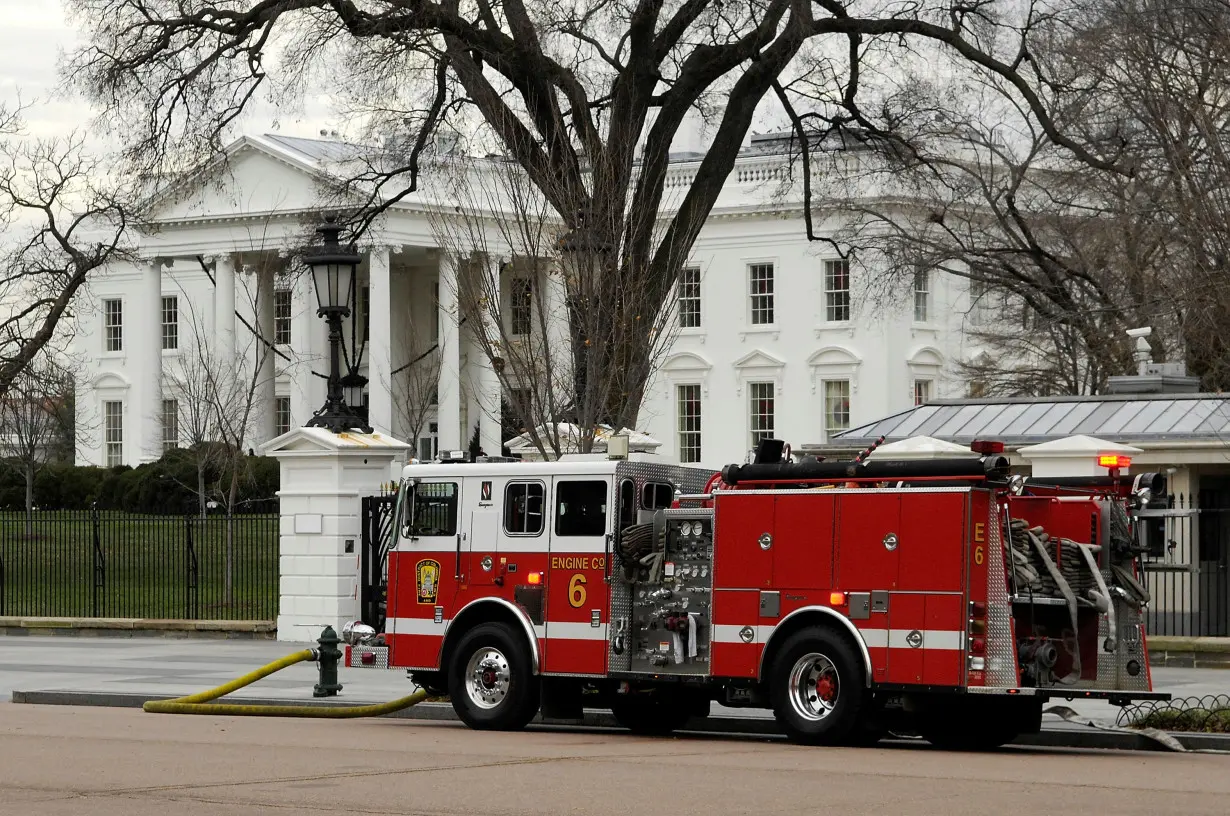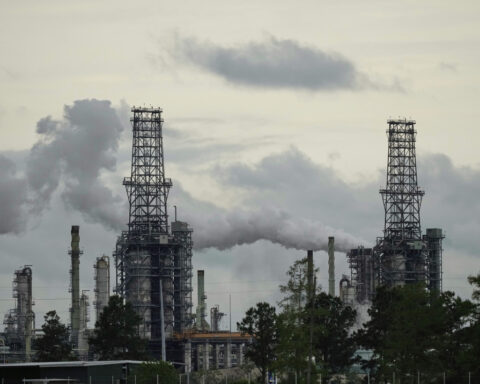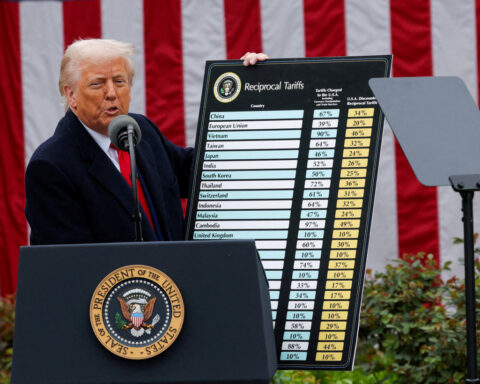By Timothy Aeppel
(Reuters) - Anyone looking around Oshkosh's cavernous fire truck factory in Appleton, Wisconsin, for evidence of the longest U.S. manufacturing slump in two decades could be forgiven for coming away scratching their heads.
The delivery backlog for the company’s most sought-after fire-fighting rigs now stretches into 2026, part of a record $16 billion backlog for all types of the company’s trucks, which range from waste haulers and cement mixers to tow trucks and airport rescue vehicles. Oshkosh’s total revenues in 2022 equaled about half that amount.

"There might be a downturn coming, but we don’t see it," John Pfeifer, the company’s chief executive officer, told Reuters in an interview.
Oshkosh illustrates a sharp divide in the factory sector.
On one side are companies buoyed by a historic shift in U.S. attitudes about how to grow and protect domestic industries, particularly those deemed essential to national security. The Biden administration has championed legislation, including the Inflation Reduction Act and the CHIPS and Science Act, funneling billions of dollars into new investments in green technology, infrastructure, and semiconductors.
A loosening of purse strings by towns and cities as they emerge from pandemic-induced austerity also is driving demand for emergency and other equipment.
In the four quarters since the CHIPS Act became law, business investment in structures has on average added 0.43 percentage point to U.S. gross domestic product growth, its strongest contribution to economic growth in more than a decade, according to Commerce Department data. All that work needs machines to get the job done, fueling orders for heavy equipment makers.
MIXED BAG
But at the same time there’s a swath of U.S. manufacturing stuck in the doldrums, which is why the economic numbers tell a mixed story.
The Institute for Supply Management’s closely watched monthly gauge of U.S. factory activity, for instance, just notched its 14th consecutive month of contraction. That’s the longest stretch of sour reports since the early 2000s and the kind of number that economists normally associate with recession, not a manufacturing resurgence.
High interest rates and inflation have dampened demand for many consumer goods deemed non-essential, for instance, hurting those producers. Harley-Davidson, the iconic motorcycle maker, reported a 24% yearly decline in third-quarter profit in October as customers cut back on luxury spending. The company’s CEO, Jochen Zeitz, had previously told investors that tight credit was denting consumers’ ability to buy big-ticket leisure items.
But then there are the pockets of strength. The latest report from the Federal Reserve on industrial production showed that medium and heavy truck production totaled 330,000 vehicles last year, just short of 2019's post-financial crisis high point of 340,000 vehicles.
Indeed, spending on all types of core capital goods - a key measure of business investment - remains close to record highs, said Chad Moutray, the chief economist for the National Association of Manufacturers. "If you adjust for inflation, maybe you see a little more weakness," he added. "But it explains why anyone in that capital goods space says things look pretty good."
The problem for many producers is a hangover from the COVID-19 pandemic. During the crisis, manufacturers of everything from bikes to recreational vehicles saw demand explode as consumers hunkered down and shifted spending to goods that helped them weather the shutdown. But when the crisis eased, that demand dried up.
That’s not the issue at Oshkosh. Pfeifer, the CEO, said a combination of U.S. companies bringing factory work back from overseas and hefty government spending on favored industries is creating an enduring surge in demand.
"If you look at the world today, there’s a huge amount of infrastructure spending - and it’s just starting," said Pfeifer, who noted that many mega-projects like semiconductor factories take years to complete.
'CONFIDENCE TO BUY'
Other fire truck producers are also sitting on thick order books. REV Group, a Milwaukee-based manufacturer that owns four major fire truck brands, reported a record $3.6 billion backlog in its fire and emergency vehicle division in December, a 41% increase over the previous year.
The company’s CEO, Mark Skonieczny, told investors last month that he expects "demand and inbound orders" in the fire and emergency business to begin to normalize back to historic trends in the coming year.
But the sector is unlikely to slump. According to Mordor Intelligence, a market research firm, the U.S. fire truck market hit $2 billion in 2023, up slightly from 2022, and is projected to grow to $3 billion by 2029.
"We’re having one of our strongest sales years ever," said Zach Rudy, director of sales and marketing at Sutphen, a family-owned fire truck manufacturer in Ohio.
Rudy said many municipalities were cautious about spending in the early days of the pandemic, since it was unclear how the crisis would impact their funding. "But as governments started putting money back into their municipal budgets," he said, "that gave them more confidence to buy."
Indeed, after a historic slump during the height of the pandemic, state and local government investment spending has rebounded and over the last five quarters has added to U.S. economic growth by the most since the 1980s, Commerce Department data shows.
The industry is also benefiting from a shift toward electrification. Oshkosh and other major producers have developed new lines of electric fire trucks.
"We’ve got a fully electrified product now," said Oshkosh CEO Pfeifer. "So that’ll be a long-term driver, just converting from diesel to electric, that’ll last more than a decade."
(Reporting by Timothy Aeppel; Editing by Dan Burns and Andrea Ricci)

 Trump has begun another trade war. Here's a timeline of how we got here
Trump has begun another trade war. Here's a timeline of how we got here
 Canada's leader laments lost friendship with US in town that sheltered stranded Americans after 9/11
Canada's leader laments lost friendship with US in town that sheltered stranded Americans after 9/11
 Chinese EV giant BYD's fourth-quarter profit leaps 73%
Chinese EV giant BYD's fourth-quarter profit leaps 73%
 You're an American in another land? Prepare to talk about the why and how of Trump 2.0
You're an American in another land? Prepare to talk about the why and how of Trump 2.0
 Chalk talk: Star power, top teams and No. 5 seeds headline the women's March Madness Sweet 16
Chalk talk: Star power, top teams and No. 5 seeds headline the women's March Madness Sweet 16
 Purdue returns to Sweet 16 with 76-62 win over McNeese in March Madness
Purdue returns to Sweet 16 with 76-62 win over McNeese in March Madness








